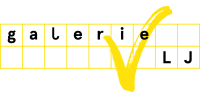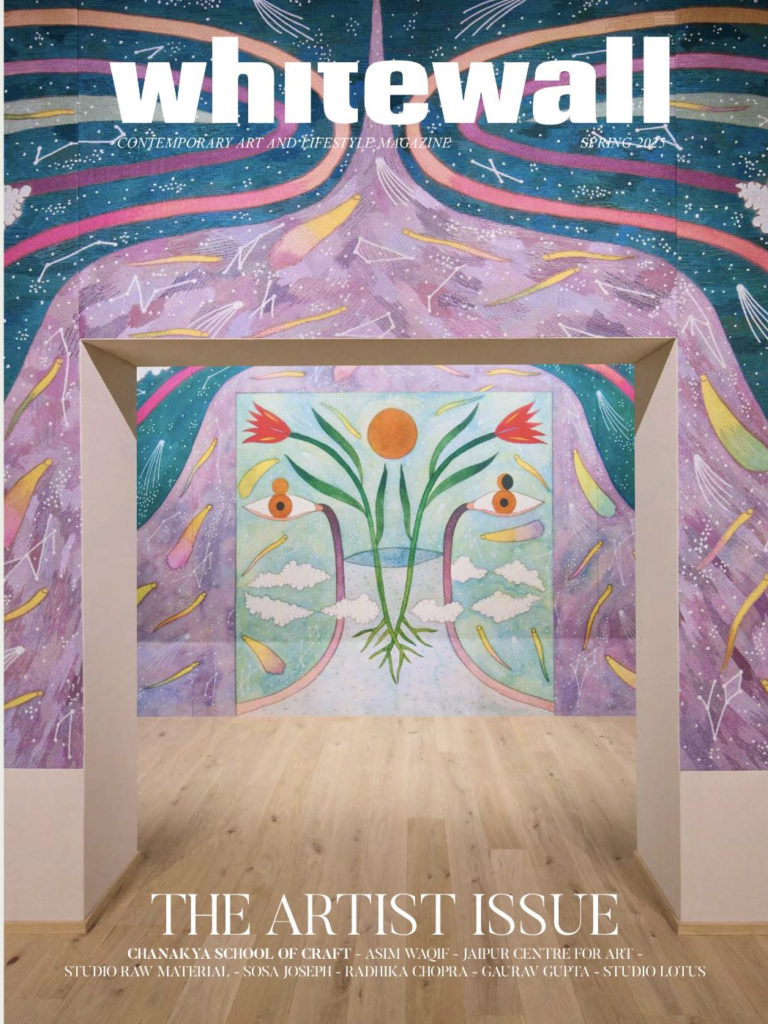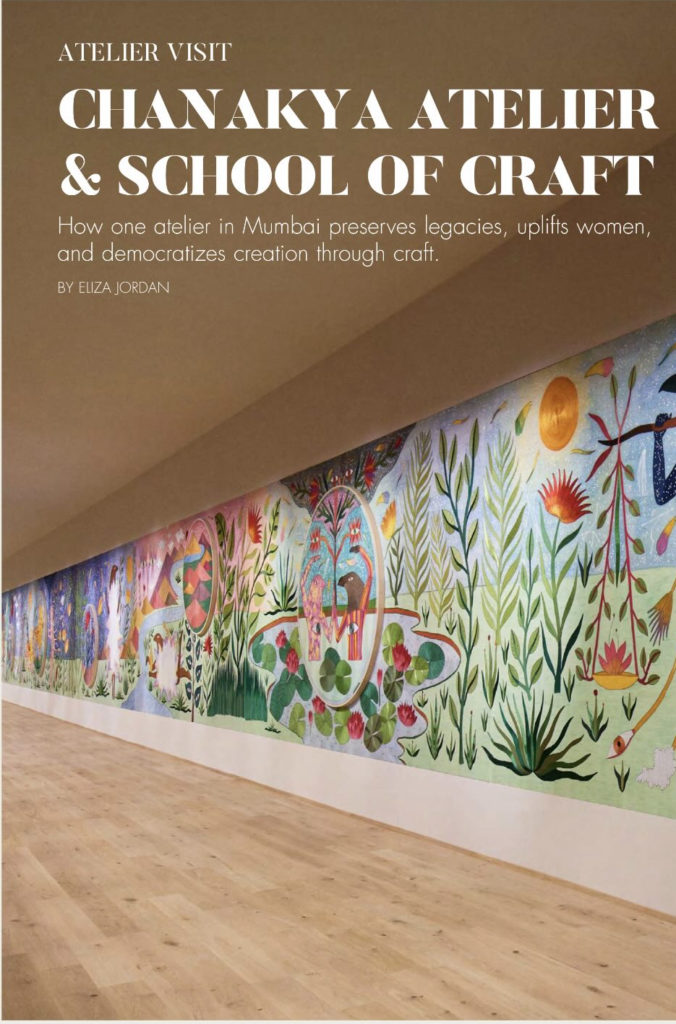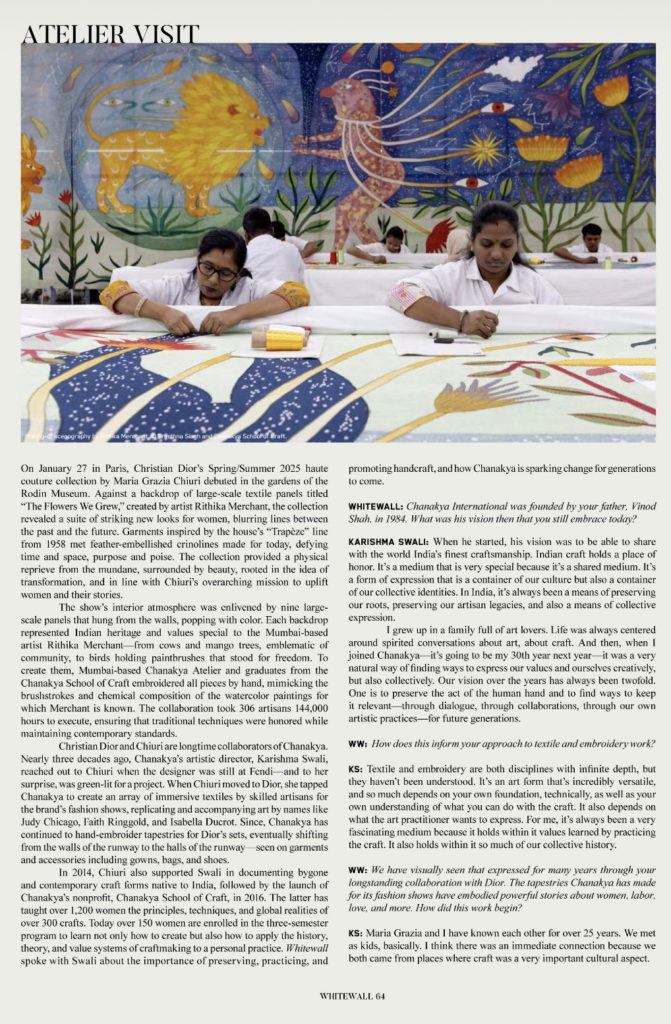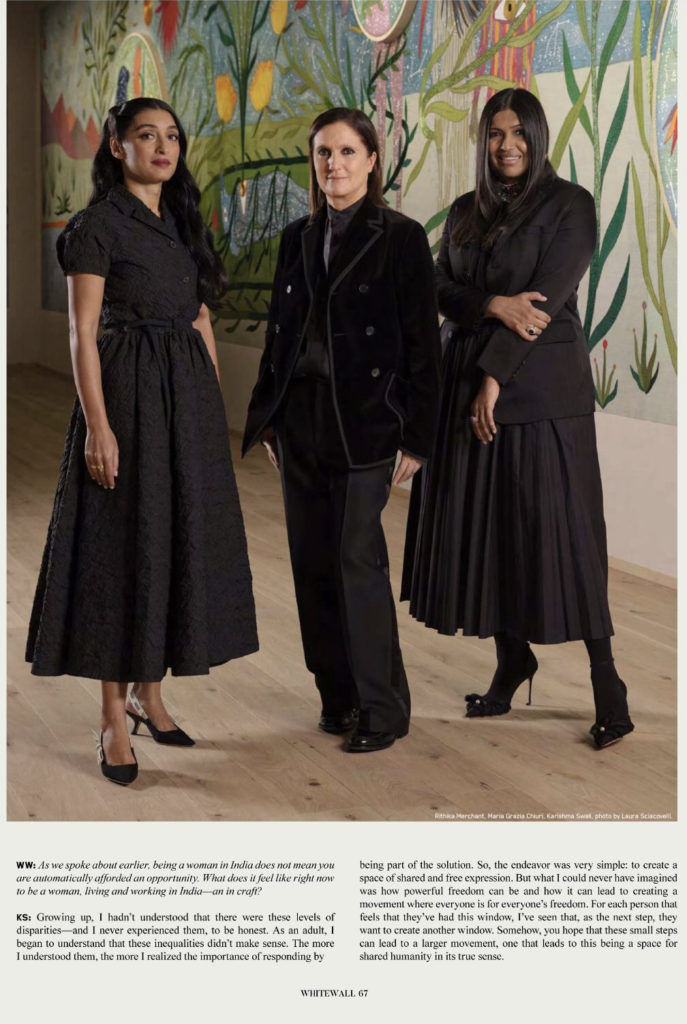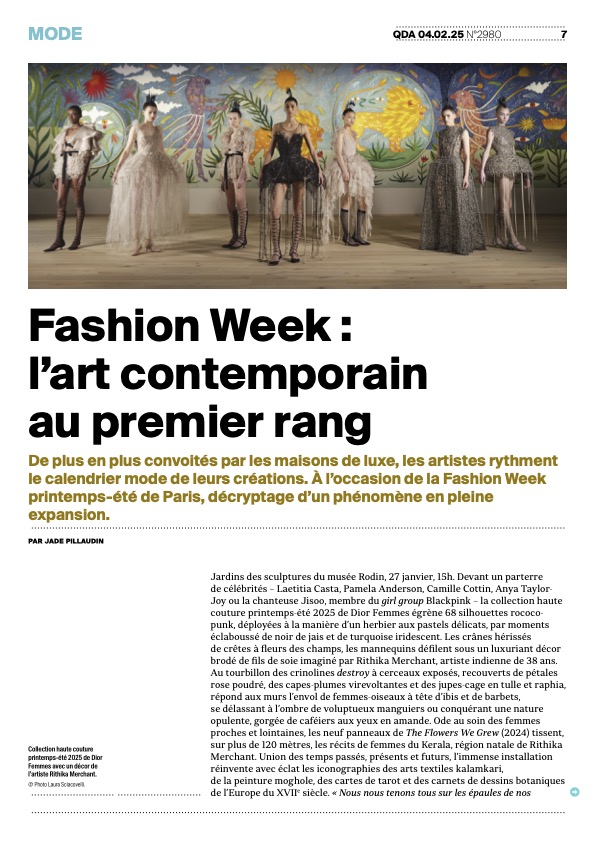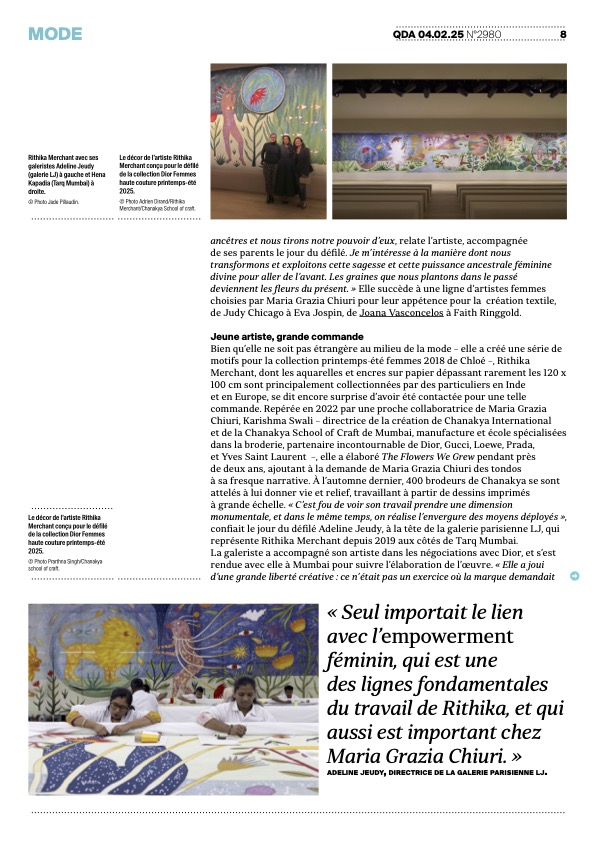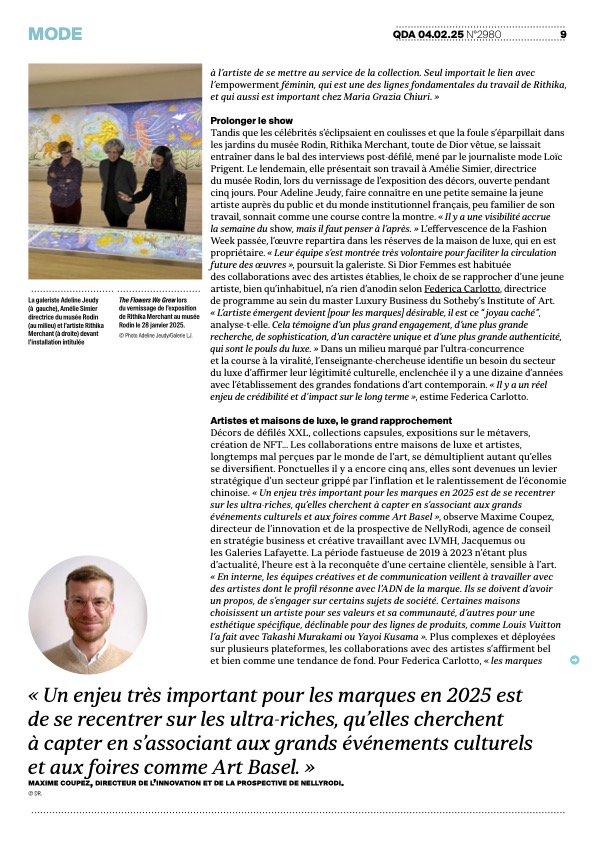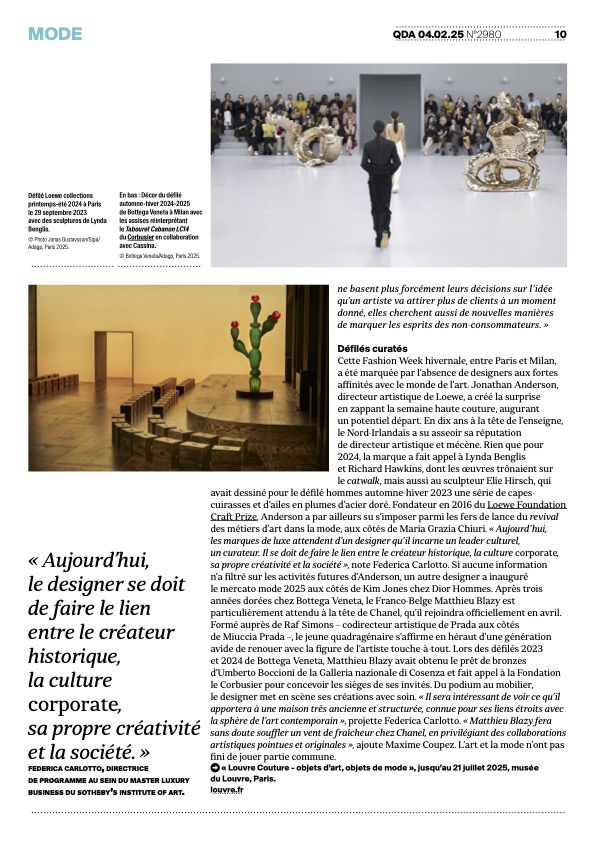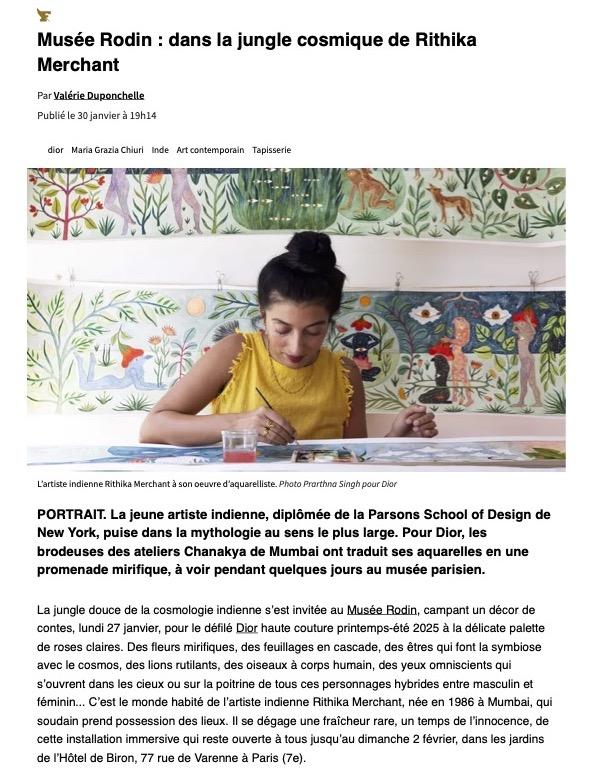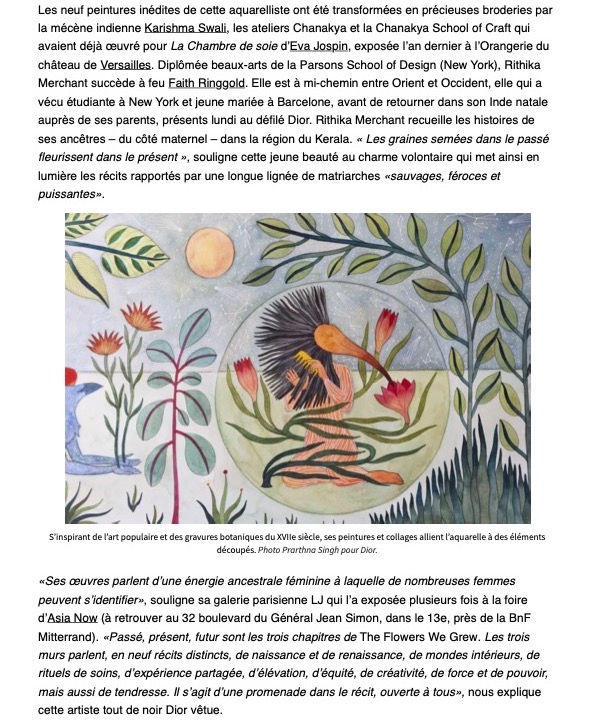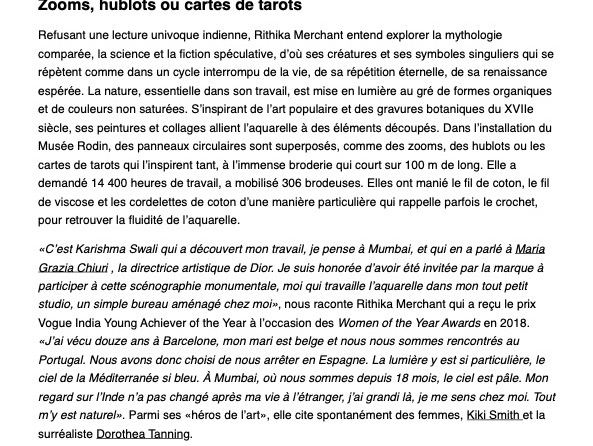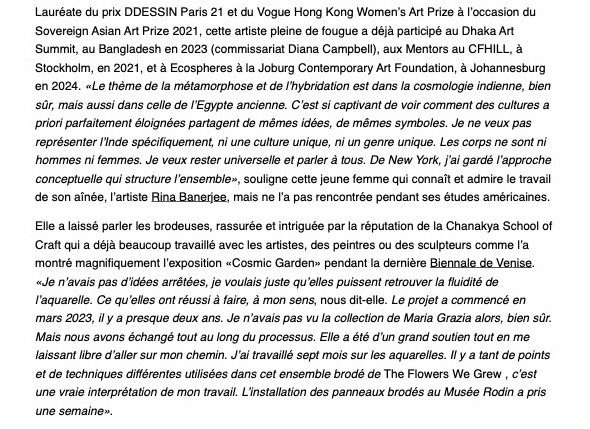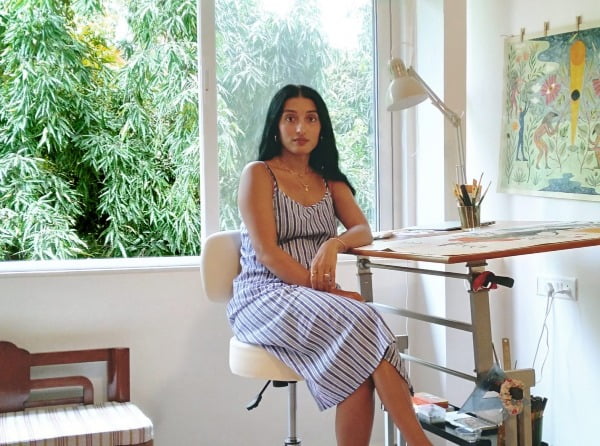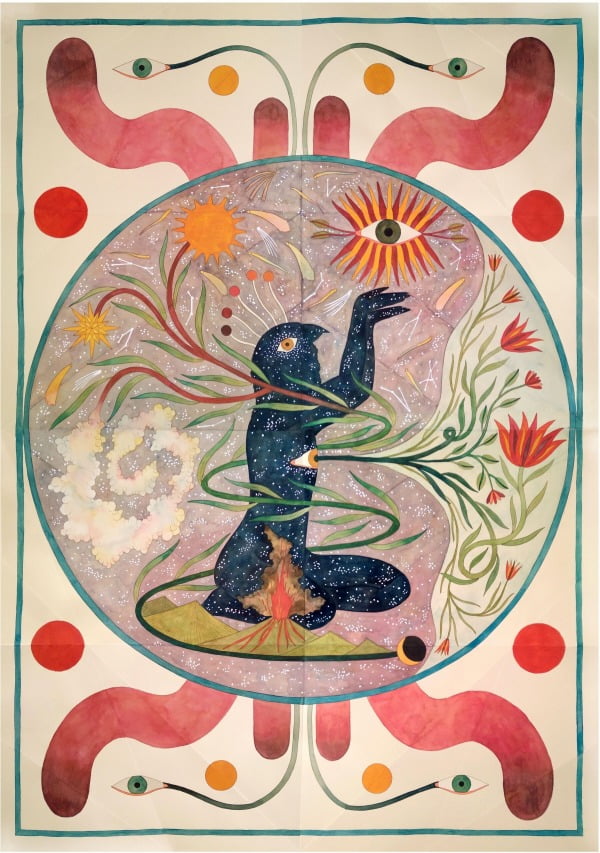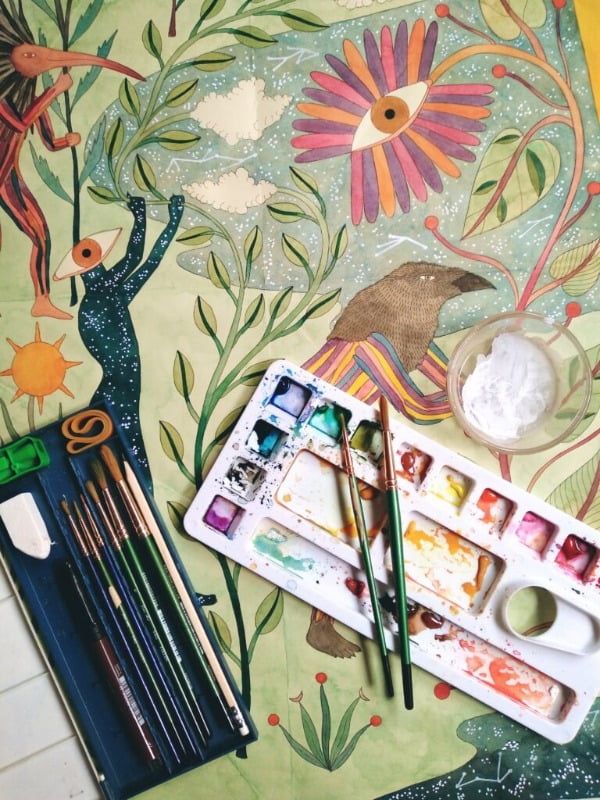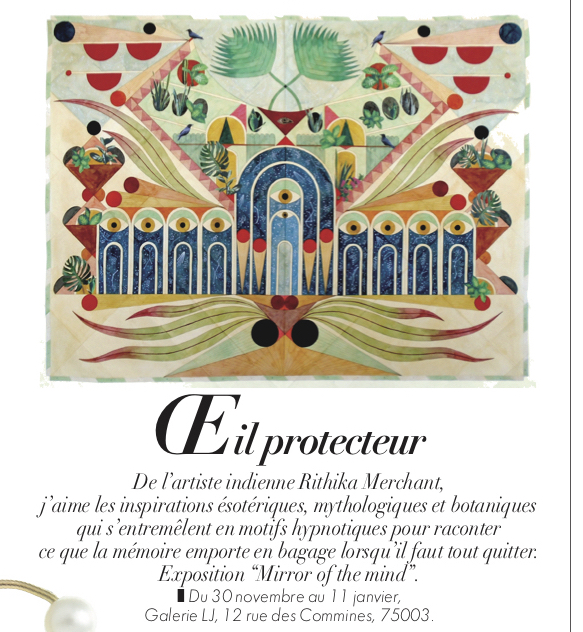Rithika Merchant Wins Artist of the Year Award @Harper’s Bazaar India Women of the Year Awards
#BazaarWomenInFocus: Rithika Merchant is crafting a visual language for a more imaginative world
From Dior to Brisbane, Rithika Merchant’s visionary art proves that stories still have the power to connect us.
Nov 07, 2025 | by Sagarika Choudhary
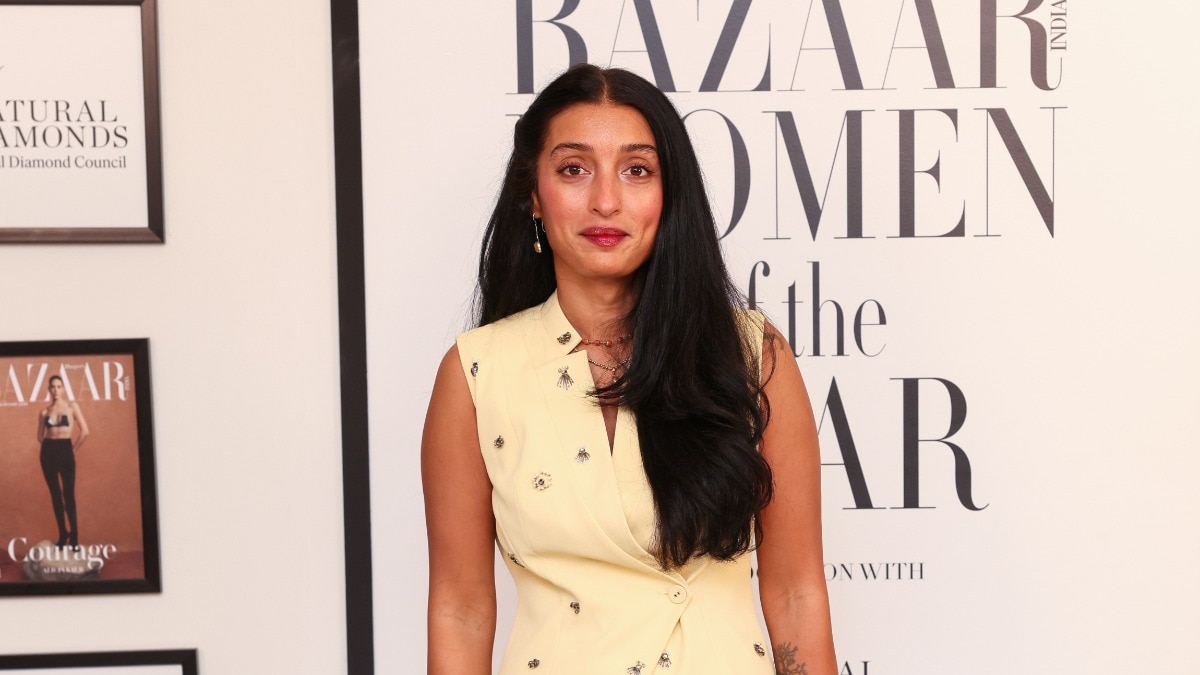
In a world that often feels divided, Rithika Merchant’s art stands as a bridge—connecting myth and memory, science and speculation, the ancient and the futuristic. With her intricate, dreamlike paintings and installations, Merchant invites us to imagine alternate worlds that are not dystopian, but deeply humane and hopeful.
This year, she has emerged as one of India’s most compelling visual artists on the global stage. Her work, rich in symbolism, layered with meaning, and often hand-painted on paper using natural pigments, explores the universal language of stories. Whether referencing folklore or celestial charts, Merchant’s pieces feel timeless and immediate all at once.
Her recent collaborations have only cemented her position as a creative force. In 2025, she worked with The Chanakya School of Craft to create an installation for Dior’s haute couture show, blending Indian artistry with global couture in a way that felt both intimate and monumental. A year earlier, her work featured at The 11th Asia Pacific Triennale of Contemporary Art in Brisbane, where her ability to weave mythology with modern consciousness drew international acclaim.
But beyond her growing list of exhibitions and collaborations, what defines Merchant’s journey is her community. In her Harper’s Bazaar Women of the Year 2025 acceptance speech, she spoke not of accolades, but of sisterhood—a testament to the kind of artist and woman she is.
“Thanks, Harper’s Bazaar, for this award. It is such a privilege and it’s so incredible to be in this room with so many accomplished women. I have been really lucky in my career to mainly work with other women, and I really feel like I am part of a sisterhood where everyone sort of uplifts and supports each other, and I’m just so grateful for this community of women that surrounds me. So it’s extra nice to get this award, and I’m really grateful. Thank you,” she beamed.
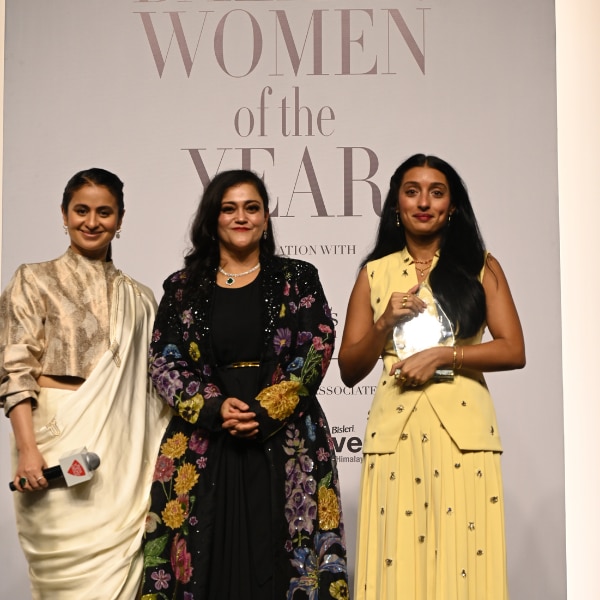
Merchant’s practice often draws from her travels and cultural exchanges, yet it remains deeply personal and Indian at its core. Through her brushstrokes, she reimagines mythology not as something from the past, but as a map to our future—one where humanity, nature, and imagination co-exist in harmony.
As she continues to blur the lines between myth and modernity, Rithika Merchant is not just painting stories; she is painting possibilities.
